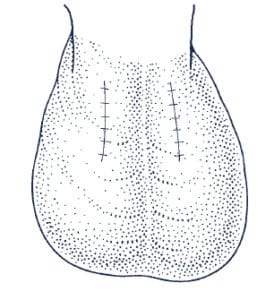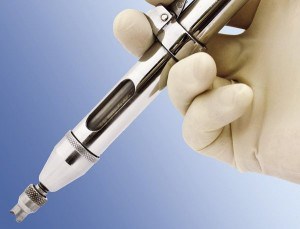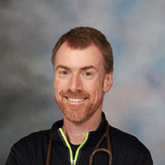Training in No-Needle No-Scalpel
Vasectomy
Virtually painless no-needle no-scalpel vasectomy is now considered the vasectomy method of choice for both patients and physicians.
The detail below provides an overview of the procedure, and world-class surgical training is a key component of the Gentle Procedures business model.
Gentle Procedures is a leader in the introduction of the no scalpel and no needle vasectomy surgical procedure in markets around the world. Our medical team has world-class training and support, and we are proud to operate at the highest standard of excellence.
Vasectomy Surgical Training Course
No-scalpel vasectomies at our affiliated clinics provide a virtually painless alternative to conventional vasectomy using a scalpel. Studies show that no-scalpel vasectomies have a complication rate eight times lower than conventional approaches and involve less discomfort. – especially when coupled with no-needle anesthesia, as we do at our vasectomy clinics.
Please contact us today for more information, or to schedule a call to discuss potential training with Dr. Pollock.
The Gentle Procedures vasectomy training course is part of our turnkey business model for doctors.
Why No-Scalpel Vasectomy?
No-scalpel vasectomy is different from a conventional vasectomy in the way the doctor gets to the vas tubes, not in the way he or she blocks them. In addition, an improved method of local anesthesia, the no-needle method, helps make the procedure virtually painless.
In a conventional vasectomy, after the scrotum has been numbed with a local anesthetic, the doctor makes two cuts in the skin and lifts out each tube in turn, cutting and blocking them. Then the doctor stitches the cuts closed.
In a no-scalpel vasectomy the doctor locates the tubes under the skin and holds them in place with a small clamp. Instead of making two incisions, the doctor makes one tiny puncture with a special instrument. The same instrument is used to gently stretch the opening so the tubes can be reached. This line accurately represents the actual size of the puncture. (I) Through this tiny opening both tubes are temporarily lifted out and then blocked using heat cauterization.
The first image below (at left) shows how the vas tubes are accessed via the small opening. The centre image gives you an idea of the actual size of the cut that will be made during your no-scalpel vasectomy. The third image is just shown so you can compare the no-scalpel technique with the cuts made for a conventional vasectomy.

No-Scalpel Vasectomy: Pulling out one of the two vas tubes

No-Scalpel Vasectomy: No stitches are needed to close the tiny opening

Conventional Vasectomy: Two moderate incisions stitched closed.
Ensuring Sterilization – Fascial Interposition
Then our procedure includes what many studies describe as a crucial step, called fascial interposition.
 This step involves tying the sheath or covering of the vas over one end of the cut tube with a dissolving thread, to create a natural barrier between the two cut ends.
This step involves tying the sheath or covering of the vas over one end of the cut tube with a dissolving thread, to create a natural barrier between the two cut ends.
The fine tubes are then gently placed back into the scrotum and the tiny opening heals within days and soon becomes invisible. There is very little bleeding with the no-scalpel technique. No stitches are needed to close the tiny opening, which heals quickly, without a scar.

LEARN ABOUT THE SUCCESSFUL PROGRAM DR. POLLOCK HAS PUT TOGETHER AND WHY DOCTORS ARE CHOOSING TO BECOME AN EXPERT PROVIDER.
No-Needle Anesthesia – Spray Application
Our affiliated vasectomy providers also offer a method of anesthesia sometimes called “No-Needle Freezing”, which eliminates the need for a needle entering the scrotum. This is accomplished by using an air pressure injector which is quicker, safer, and more comfortable for patients.
The animated image here shows both standard anaesthetic injection with a syringe and the no-needle option with an air injector. You can compare the two techniques and see how the air injector pushes the anaesthetic through the pores in the scrotal skin with a burst of air.
Benefits of No-Scalpel Vasectomy
Studies have shown an eight times lower complication rate, quicker healing, and less intra-operative discomfort for a no-scalpel vasectomy compared to the more conventional approach. Not all vasectomy providers prefer this technique, but we feel that it is clearly preferable to do a vasectomy through a tiny central opening versus making larger cuts requiring sutures and a more complex recovery.

Vasectomy Training Basics
These images show the minor change to the male reproductive anatomy brought about by vasectomy.

The testicles produce sperm that travel through the Vasa Deferens. You can easily feel them through the scrotal skin on either side of the penis.

The vasectomy procedure simply interrupts the flow of sperm by cutting the sperm tubes and blocking their ends.
Open-Ended Type Vasectomy
 Our vasectomy doctors performs an “Open-Ended” vasectomy technique, where the vas tube from the bottom end is left open (uncauterized), while the end of the tube leading to the penis is cauterized. As detailed above, fascial interposition is also performed to ensure the success of your vasectomy.
Our vasectomy doctors performs an “Open-Ended” vasectomy technique, where the vas tube from the bottom end is left open (uncauterized), while the end of the tube leading to the penis is cauterized. As detailed above, fascial interposition is also performed to ensure the success of your vasectomy.
While studies are not conclusive, it is postulated that leaving one end open may permit sperm to leak out, resulting in less post-operative discomfort; this is because there is no sudden pressure back-up to the testicles. The leakage does not increase risk of pregnancy, as the other end of the vas is sealed. Sperm are simply reabsorbed back into the testicles in a natural process that causes no pain or pressure.
Studies also indicate that it reduces the time it takes for a vasectomy, and vasectomy reversal may also be easier to perform later, if desired. We do not recommend getting a vasectomy if a patient thinks they might eventually want a reversal. Vasectomy should be considered as a permanent contraceptive method.
Not all vasectomists around the world perform this open ended technique, and some prefer to cauterize both ends. At Gentle Procedures our doctors are able to maintain our high success rates while also offering the potential benefits of an Open-Ended vasectomy.
Possible Risks and Complications with a Vasectomy Procedure
There are no life-threatening complications associated with NSV (No-Scalpel Vasectomies). The minor complications that can arise are generally short-lived and resolve with ice, rest, anti-inflammatories, and time. Long trm safety with NSV is considered excellent, although all of the following are possible:
- Mild discomfort: Some men report a mild aching sensation to the scrotum for a few hours to a few days after the procedure.
- Mild bleeding into the scrotum (1/400): May form a small tender swelling for a few days.
- Scrotal hematoma (1/1000): A major bleed into the scrotum causing a grapefruit size tender scrotum which may take months to heal.
- Infection (1/500): May present as redness and tenderness at the healing site opening or non specific tenderness within the scrotum, which may require oral antibiotics. (More serious infection is possible i.e. abscess formation that may require intravenous antibiotics 1/1000).
- Epididymitis (1/100): Tender swelling of the epididymis, the tube connecting the vas deferens and the testes.
- Sperm granuloma (1/500): A small, potentially uncomfortable, bead-like structure made of leaked sperm that may develop at the site where the tube was cut and blocked.
- Post Vasectomy Pain Syndrome (1/1000): A rare complication of a persisting dull ache in the testicle where the inflammation does not settle down. It may resolve on its own or may need another surgical procedure.
- Failure (less than 1/1000): Because a doctor has inadequately blocked one or both tubes, or because one or both tubes have rejoined
Next Steps
Please get in touch to discuss potential next steps toward vasectomy training and becoming a Gentle Procedures affiliated doctor.
Our vasectomy training course is the foundation of the Gentle Procedures program that also includes support in marketing your vasectomy services in your city.
LEARN ABOUT THE SUCCESSFUL PROGRAM DR. POLLOCK HAS PUT TOGETHER AND WHY DOCTORS ARE CHOOSING TO BECOME AN EXPERT PROVIDER.

Kevin Christie
MD
After ten years of a very busy, broad based family practice I was burning out. I love medicine, but the pace and stress of general practice was wearing me down. Couple that with the demands of a young family and I was feeling trapped and overwhelmed.
While reflecting on my work-life balance I received a flyer advertising the opportunity with Gentle Procedures. I took a chance and flew across the country to meet Neil and Greg. We had dinner together to discuss the business opportunity, and I then spent a day in clinic with Neil to see if the procedures were actually as good as advertised. I was blown away. From the procedures themselves, to the entire Gentle Procedures process of training, launching the business and ongoing support – it is all very thorough and impressive.
So I took the plunge, invested the time and money, and have now been up and running for 3 months. I have NO REGRETS. I have learned so much, felt so supported, and have already started to see the benefits in my life. I highly recommend this opportunity. It’s a game changer.
